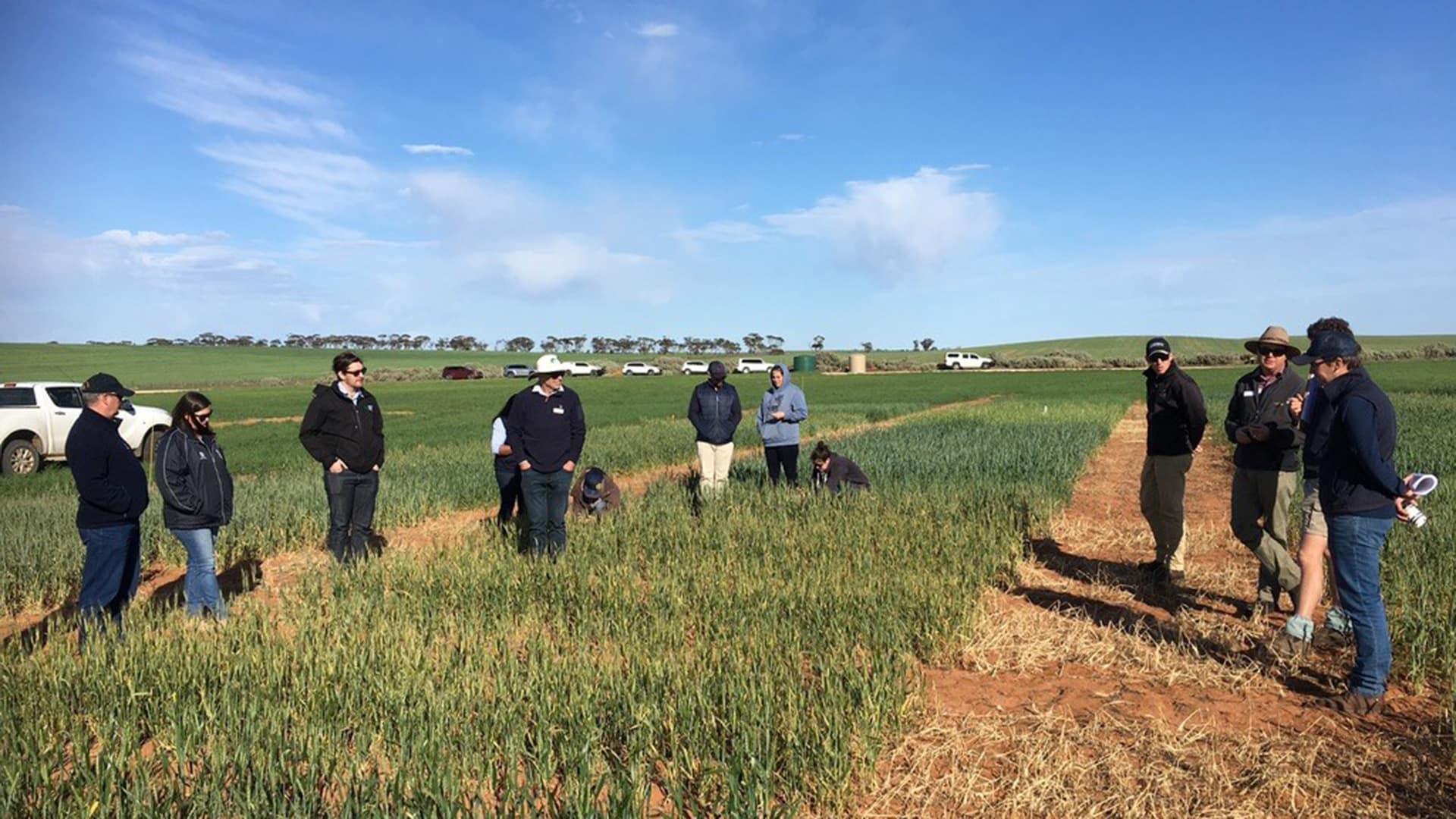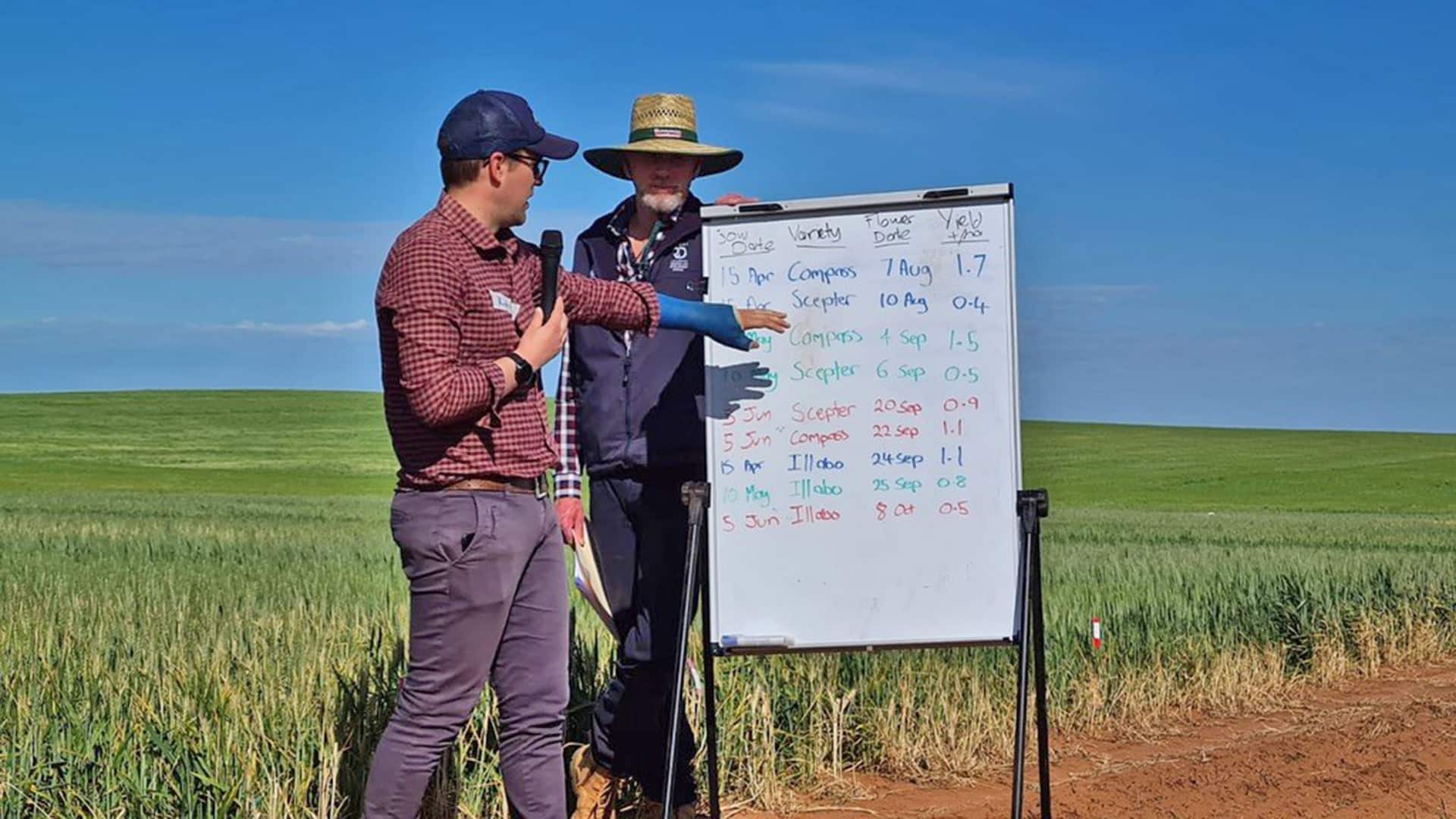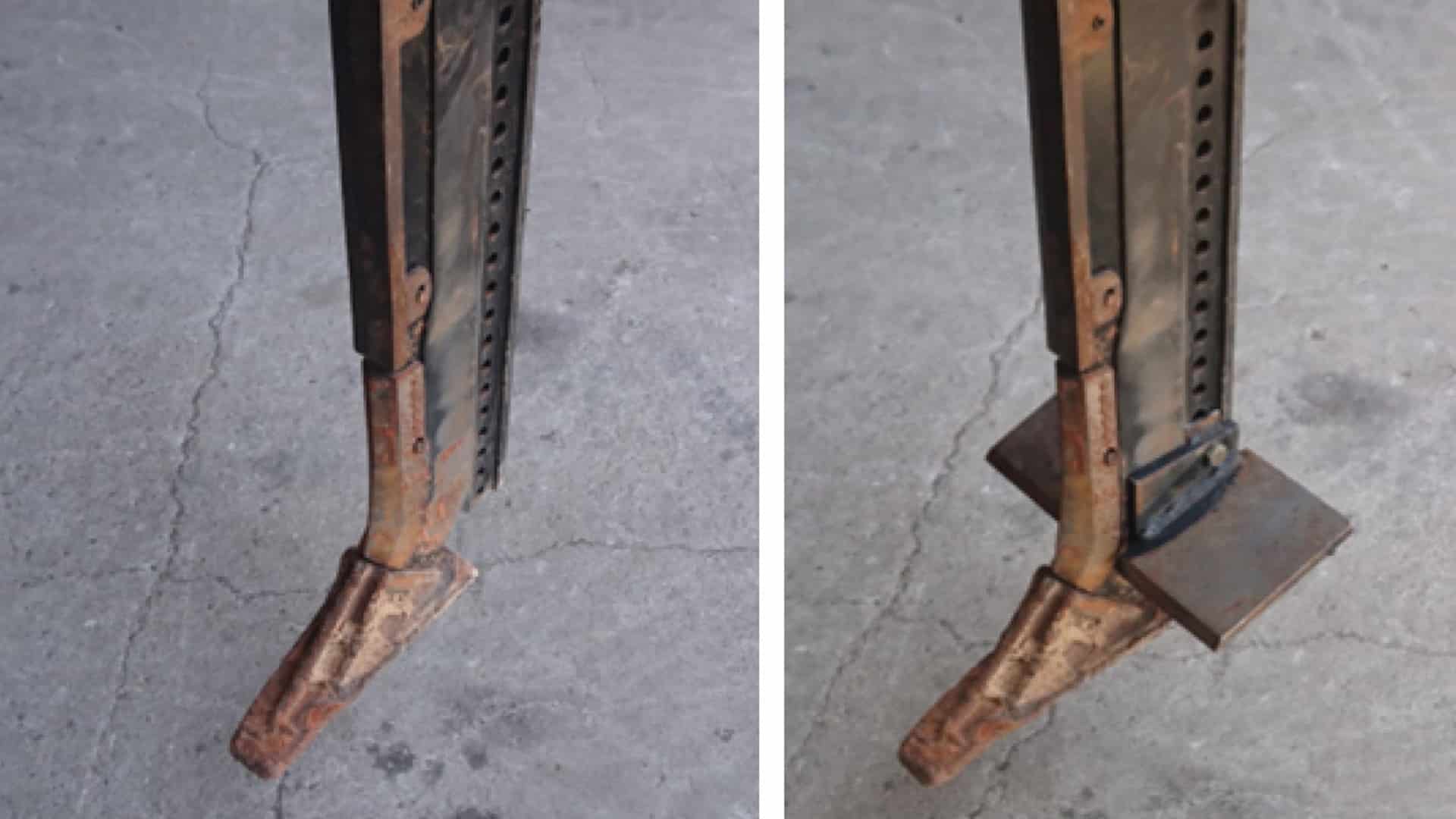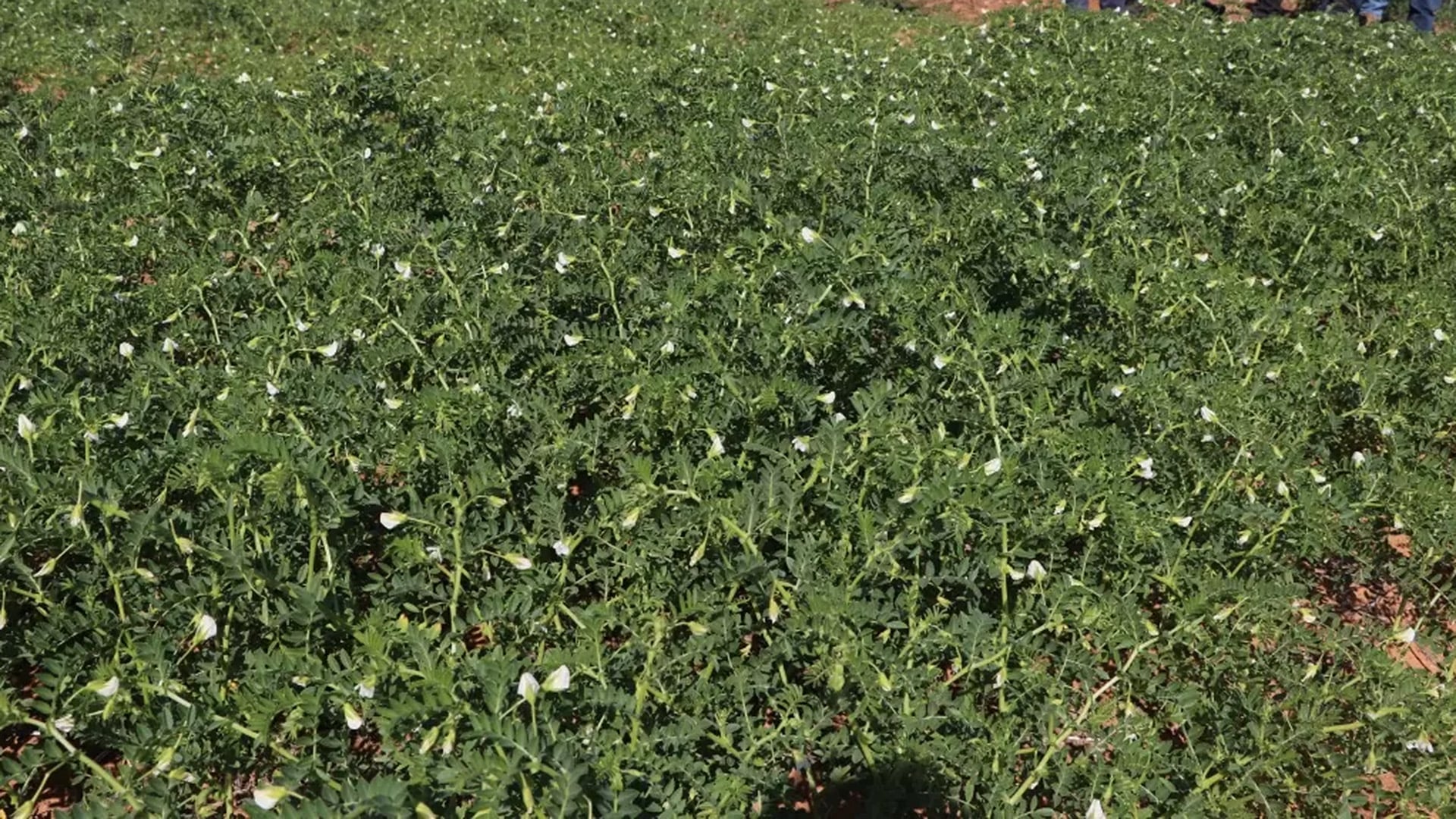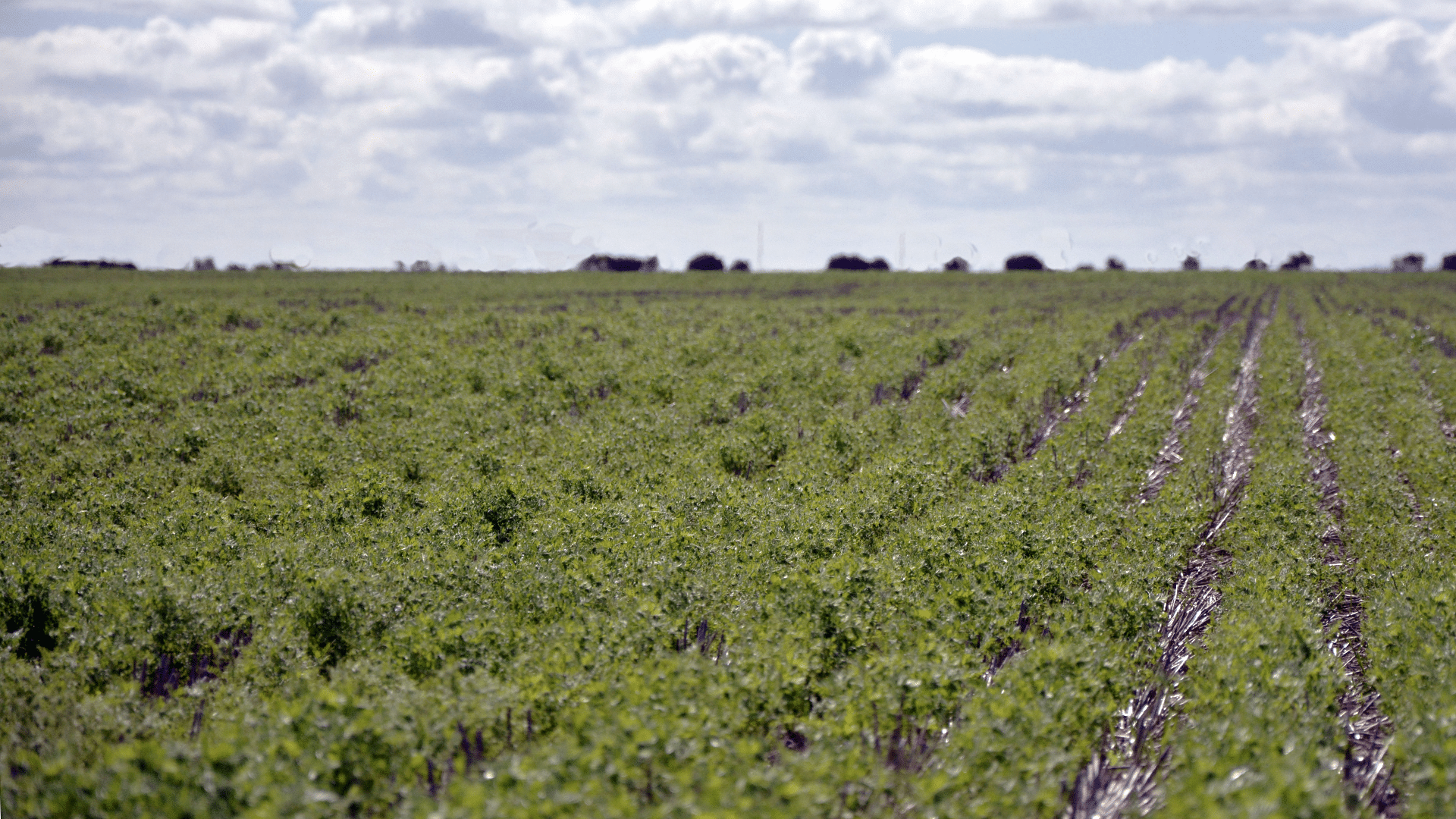START
FINISH
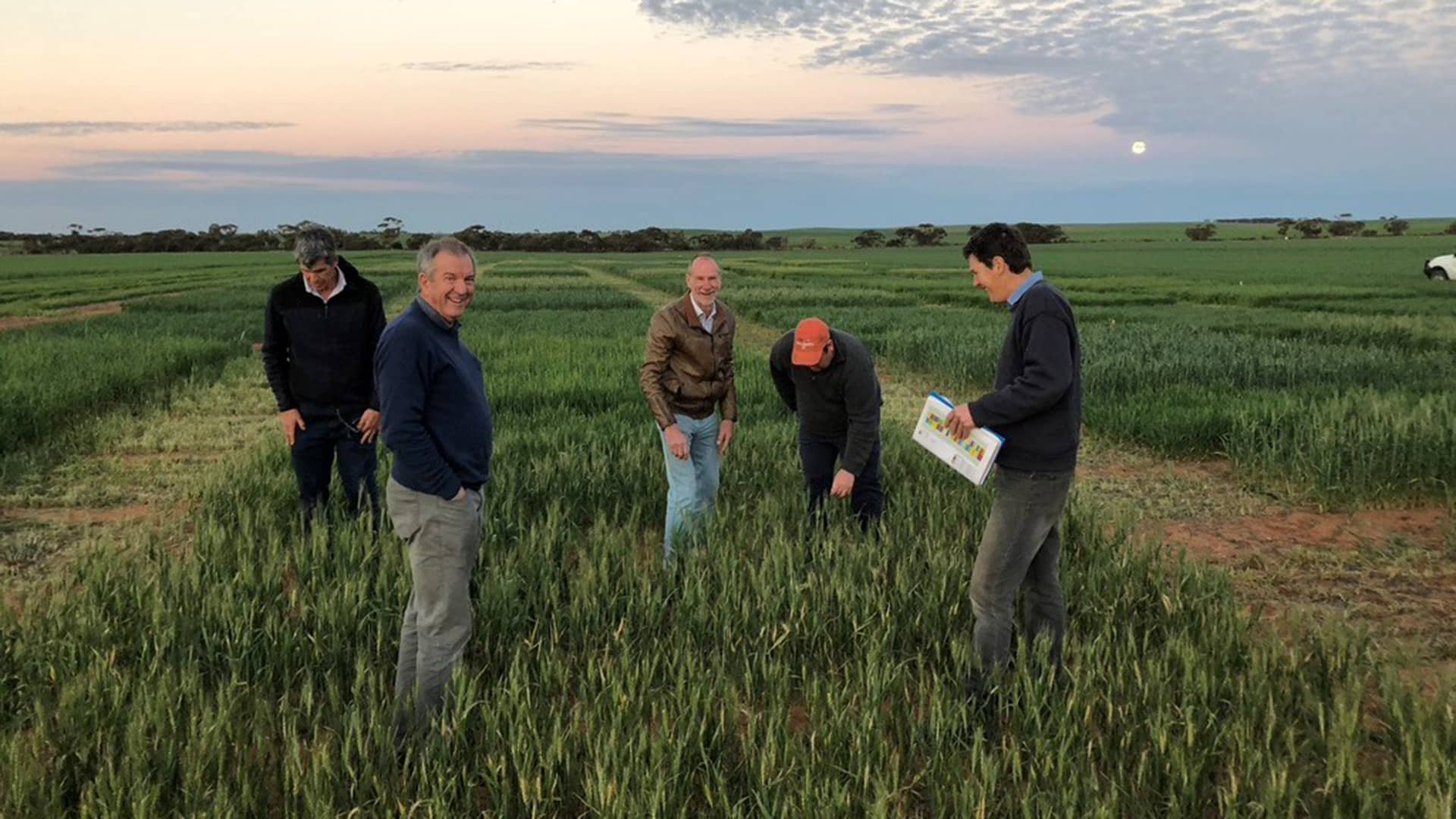
Summary
This project aimed to investigate suspicions that Clearfield® crop varieties are more susceptible to frost damage, particularly after herbicide use. Similar Clearfield® and conventional barley, wheat and legume varieties were grown from four sowing times, and selected Clearfield® plots were treated with herbicide. Differences in frost damage were minor and inconsistent between the crop varieties and treatments. Time of sowing was found to be a greater driver of frost damage, with early-sown fast spring wheats being most vulnerable. In lentils, delayed sowing was found to have a greater yield impact than frost damage.
Background
The Clearfield® cropping system is popular with growers in the SA Mallee as it allows some in-crop weed control using Imidazolinone or IMI (Group 2) herbicides. Clearfield® varieties are often sown earlier or as a dry sowing option, or on lighter soil types where both brome grass and frost damage can be a problem.
However there has been increasing concern among local growers and advisers that their IMI-tolerant Clearfield® crop varieties are more susceptible to frost damage, especially after herbicide use.
Mallee Sustainable Farming (MSF) conducted trials of several barley, wheat and lentil varieties over three years to investigate these concerns.
Research Aims
The core objectives of the project were to investigate:
- Whether applying Imidazolinone herbicides to Clearfield® crop varieties impacts on frost susceptibility.
- How timing and rate of Imidazolinone application affects frost susceptibility.
In The Field
Trial plots were sown in 2018, 2019 and 2020, incorporating Clearfield® and conventional crop varieties with similar phenologies. Each Clearfield® crop variety was divided into treatments that were either sprayed with the IMI herbicide Intervix® at the label rate of 0.75 litres per hectare or left unsprayed. Conventional crop varieties were not sprayed.
Each of these groups was also divided into four time of sowing (ToS) trials: 17 April (ToS 1); 26 April (ToS 2); 6 May (ToS 3); and 13 May (ToS 4).
Both 2018 and 2019 were considered drought years and irrigation was required for ToS 1, 2 and 3. ToS 4 was not irrigated. Conditions improved for 2020, with only ToS 1 requiring irrigation.
The lentil trials followed a similar methodology, with corresponding ToS dates. Spinnaker® herbicide was used at 100g/ha for IMI treatments, as Intervix® is not registered for lentils.
Temperature sensors at canopy height were used to monitor for frost and 26 frost events were recorded.
The cereal crops were inspected for floret sterility at dough formation (Zadoks Growth Stage 81-87). A harvest index was calculated as a percentage of grain from total biomass, and grain yield was measured from the internal plots only to negate edge effects.
Lentils were inspected for visual symptoms of frost damage and the ratio of frost damaged pods to total pods was calculated.
Results
There was no clear evidence that the Clearfield® trait or Intervix® applications increased frost susceptibility.
Although Clearfield® cereal varieties were more affected by frost than conventional varieties in some treatments, the impacts were minor and not consistent. Some Clearfield® barley and lentil varieties suffered less damage than the conventional alternatives.
The greatest driver of frost damage (as floret sterility) was found to be time of sowing, with fast spring wheat varieties sown before the start of May suffering the greatest damage in the trial environment.
Slower developing wheat varieties escaped significant floret sterility, even when sown in April (ToS 2) and Clearfield® barley options were relatively unaffected by early sowing.
Pulse crops were less affected by frost than the cereals. Early sowing increased the number of damaged pods in both lentils and field peas, while delayed sowing increased yield in field peas. However, delaying sowing was found to reduce yields more than frost damage in lentils and accepting frost damage seems the better choice.
Project Participants
Mallee Sustainable Farming: Tanja Morgan
Frontier Farming Systems: Michael Moodie
The Problem
Field evidence from the Mallee suggested Clearfield® crops were more susceptible to frost damage than conventional varieties.
The research
Clearfield® and conventional crop varieties were compared for frost damage under a range of herbicide and time of sowing treatments.
More information
Tanja Morgan, Mallee Sustainable Farming
T: 0429 395 918
E: [email protected]
Value for Growers
This project demonstrated to growers that their preferred Clearfield® crop varieties are unlikely to be more susceptible to frost damage, and highlighted the greater importance of time of sowing for flowering and frost danger.
This provided good opportunities to provide growers with more information about crop phenology, time of sowing, and time of flowering with valuable technical input from Kenton Porker, who had been researching time of flowering with SARDI.

